#golden topminnow
Text
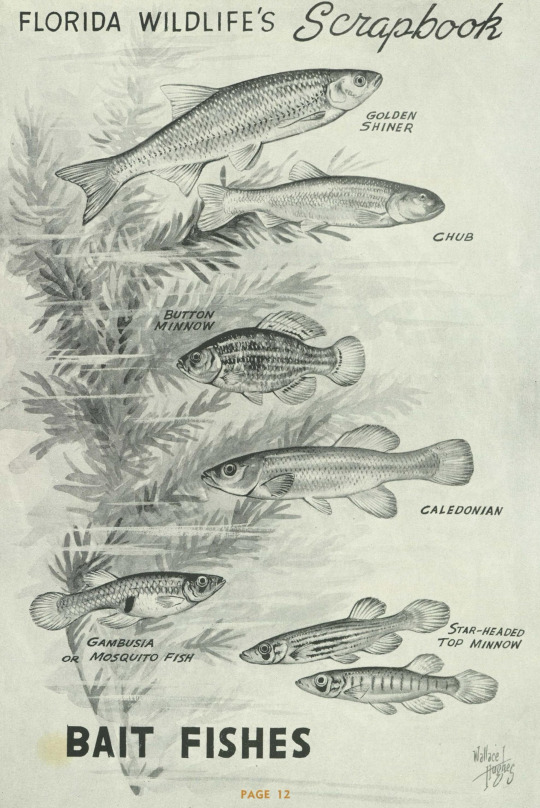
Florida Wildlife; vol. 9, no. 11. April, 1956. Illustration by Wallace Hughes.
Internet Archive
376 notes
·
View notes
Text
Kentucky tennessee and alabama have the most diverse freshwater animals in the entire world
Some of them are so pretty! Just look at these fishes

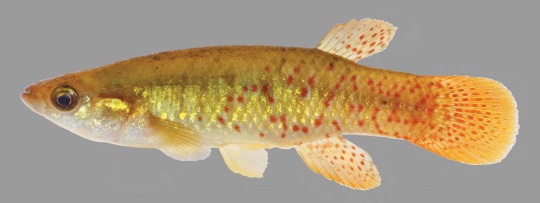

Speckled Darter, Golden Topminnow, Emerald Darter
3K notes
·
View notes
Text
After not seeing them for weeks and assuming they'd been eaten by something, the crayfish made an appearance! Several of them, in fact. Apparently they've just been hiding. I think they were hanging out around the heater, we had a few chilly days.
In other news, we found some nice log segments on the side of the road. Mom took some for her garden, and I got a new seat!

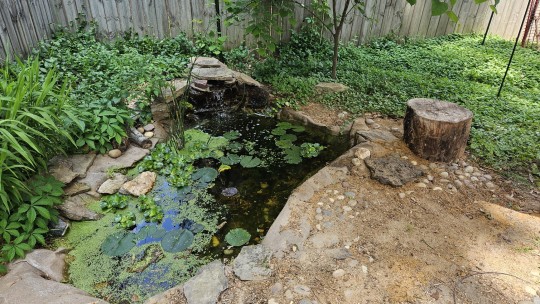
Tadpole season is in full swing, two more clutches of American toad eggs were laid and have hatched out, so there are tadpoles of assorted sizes everywhere! I think the crayfish have been eating them, the first group's numbers diminished faster than last year.
Speaking of babies, there are baby fish too! A lot of them! Last year there were only a handful of babies, but this year there have been several clutches. This time, there are both the xanthic "rosy red" morph and wildtypes! I had been considering adding a few golden topminnows, I'm glad I didn't because I don't want the pond to get overcrowded.
Here's a couple more random pics:

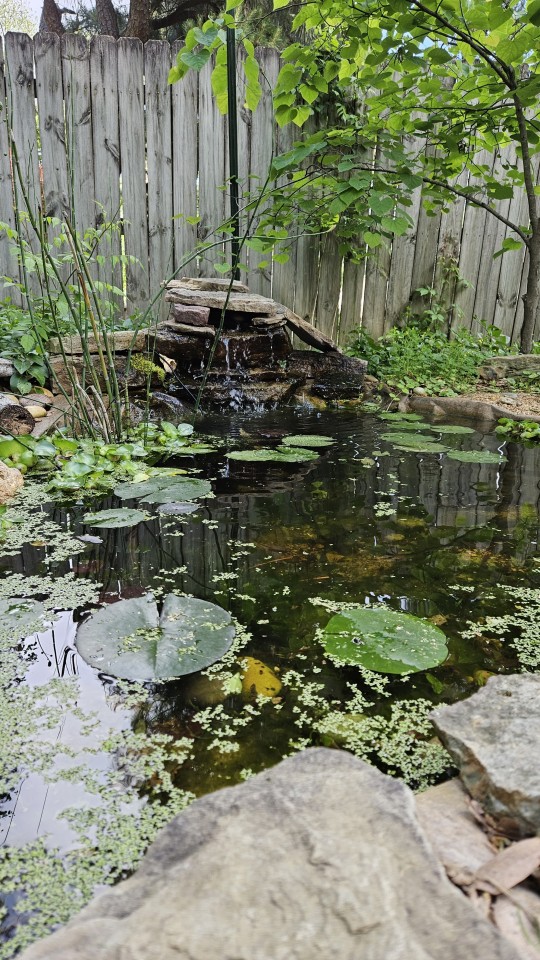
6 notes
·
View notes
Text
I’ve been researching subtropical species to keep in my tanks and holy fuck there’s so many like. sick as fuck subtropical minnow species native to the USA that you don’t see in the hobby much. you see them used as bait minnows but they are GORGEOUS.
Golden topminnow (Fundulus chrysotus)
these guys have arapaima markings........... im obsessed. these are definitely high on the list to be my next fish.
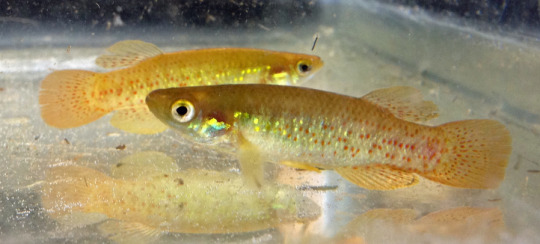

Rainbow Shiner (Notropis chrosomus)
Very common feeder fish used to stock ponds and lakes with (to feed the larger fish they’re stocking the pond with). they get some VIVID coloration, especially during spawning


Fathead minnow (Pimephales promelas)
I adore these dudes, there’s a version of this in petstores called the rosy red minnow but i don’t like how those look, I much prefer the wild type. The males get these bulbous heads and headbutt each other to assert dominance. They’re farmed on a large scale for live bait.
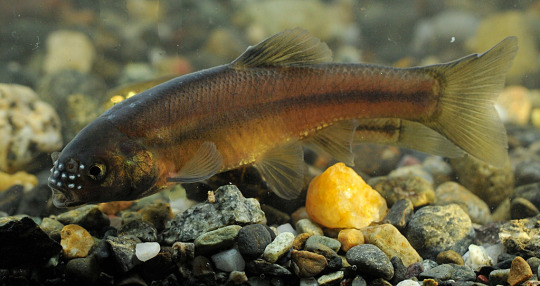

1 note
·
View note
Photo




Tank update part 2!
Allow me to introduce:
Jan - a female golden topminnow, around 2” and some change.
Ken - a male topminnow, the largest of his trio, full size at around 3”.
Poe - a female golden topminnow, the smallest of the bunch, at around 1.5”
And
Domino - a banded sunfish, the smallest of ALL my fish at around 1” or smaller. Very shy.
Bonus points if you can guess the name theme!
I also have a Tracked Nerite snail hiding from me in there, and I’m planning on getting a horned nerite, which would be smaller (provided I could find one in my area).
#tank update#fishblr#my fish#golden topminnow#fundulus chrysotus#banded sunfish#enneacanthus obesus#native fish
6 notes
·
View notes
Text

Golden topminnow | Fundulus chrysotus
X
101 notes
·
View notes
Note
Noted! Thanks for the advice. Any opinion on golden topminnows? Can't seem to find much about them out there at all other than they're another lesser known brackish water fish.
Mod @thebrackishtank
Not a whole lot, I'm afraid. Most of what I know is general to the Fundulus genus. They are much like the north and central American livebearers that we are familiar with in the trade - best kept in ratios of more females than males, they can be a little pushy but aren't usually very aggressive, should ignore non-killifish tankmates. Probably best kept around 70-72F with slightly hard water. Fishbase reports they are most freshwater fish than brackish, so choose tank mates appropriately.
3 notes
·
View notes
Photo

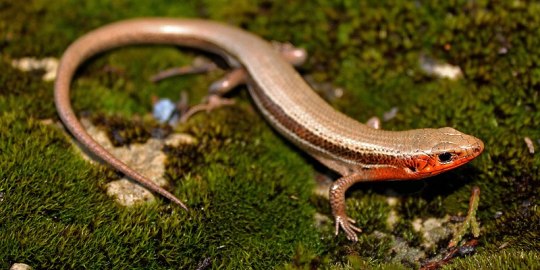

Golden topminnow, Southern coal skink, and Alligator snapping turtle, a few of the animals from the Piney Woods.
2 notes
·
View notes
Note
Im setting up a very low end brackish tank and I have a particular interest in fish with interesting biological histories and adaptation. I'm mainly focused on golden wonder Killifish at the moment and I was wondering what your thoughts are on tankmates, I was thinking about stocking a few female Florida Flagfish and the killi(s) in a 40 paladarium with about 20 gallons of water
I typically don’t recommend more than one Killifish species per tank - defining that here as a member of the Cyprinodontiformes order. This includes the Killifishes, Topminnows, Splitfins, and Pupfish which all find their way into the trade on occasion. If you want the Golden Wonder Killie (a great choice) then that excludes others. But a few alternative options if you are inclined:
- The Mangrove Rivulus (Kryptolebias marmoratus) can survive for days out of water! They are pretty easy going with easy-going tankmates and a paludarium for Fiddlers and Guppies would be a fun tank.
- The Sheepshead Minnow (Cyprinodon variegatus) can tolerate up to 6 times the salinity of the ocean! They are pretty territorial, but if you offer lots of plastic plants and have females outnumber the males they should do okay in this tank if you increased it to 30 gallons of water.
- Looking for a hardy fish that can tolerate extremes? Look no further than Mosquitofish (Gambusia sp.) as they can survive water at subtropical temps up to 108F and salinity twice that of the ocean. They are invasive to many areas due to their wide range of tolerances and utility at eating nasty pond bugs. I wouldn’t mix them with other species though. [Not a Killifish but they are definitely masters of adaptation]
If you want to keep with the Wonder Killies, look into X-Ray Tetras (the only commercially available brackish tetras), Orange Chromides (from a genus of Indian Cichlids), Kribensis (which breed readily, but percentage of males/females in brood depend on pH), and Platies (which aren’t really unique, they just are nice fish which will work here). Knight Gobies are another choice.
Also consider Fiddler Crabs, they are fantastic tankmates in a peaceful, brackish paludarium. Though a few other brackish amphibious crustaceans exist in the trade - Red Clawed Crabs, Crayfish, Green Hermits, and sometimes other crab species - avoid them all as they are more likely to consume your fish.
Avoid too small fish, such as Bumblebee Gobies, Guppies (including “normal”, Endler’s, and Swamp), Blue-Eyes, and Dwarf Mosquitofish (only a distant relation to Gambusia) as they are food targets for large-ish Killies.
2 notes
·
View notes
Text
2017 Year in Review
Continuing my year in review series from 2014, 2015, and 2016 I have kept track of every fish caught by day and location. I have compiled and crunched the numbers are here are the results.
372 total fish
83 different species
57 new species
52 saltwater species
31 freshwater species
Month with most fish - February (119)
Month with least fish - January & June (0)
Fished 34 different locations
Caught fish on 38 different days
Total days fishing - somewhere around 40
Fished off personal boat – 0
Fished off pier – 3
Fished off party boats – 1
Fished off private charter – 2
Countries fished - 3 (Mexico, Costa Rica, United States)
States fished - 3 (Florida, Georgia, California)
My numbers are down again this year, but it was an epic year of adventure and I finally crossed 200 species with a record 57 new species. Highlights of the year, not necessarily in any order.
1. All the different people I got to fish with this year. I got to fish with Ben in Mexico and in California, Pierce twice in Orlando, Bryan from Washington state while he was here for the AFS, Dirk - species hunter from the Netherlands, and even got to fish with Pat again as the year was closing out. Of course my primary fishing partner was Meghan but we are going to have to work on her numbers haha.

Ben and I on the shores of Lake Chapala, Mexico.
2. Our expedition to Mexico with Dr. Lyons across multiple Mexican states was epic and involved many highlights within the trip itself. Highlights of the trip include:
Breaking down and riding in the van on top of the tow truck.
Fishing at over 10,000 ft elevation.
All of our roadside food and drink stops.
Guachimontones prehistoric site.
Fishing in our restaurant
2 days of fishing in Acapulco.

The Acapulco Crew.
3. Costa Rica fishing. It wasn’t a fishing trip and I didn't get my rooster, but I did get a chance to get some new species, including the strangest fish I have ever caught - the Foureye Rockskipper.
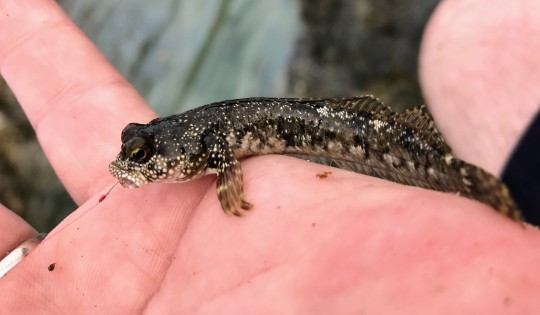
4. Clown hunting in Delray Beach. I finally got my Clown Knifefish - this fish has been on my dream list for a long time. Meghan, of course, caught one right after I did.

5. California Fishing. Cool little trip I took out to San Diego with Ben as my guide. It was very interesting to learn how the other coast fishes and to rack up some new species. We had quite the fish taco feast after a great day of rock-fishing. I also caught my first ray!

San Diego at night
It was a good year and I actually broke my goal of 225 species with a total of 240 for the year. Setting my goal for next year at 275 - with an eye towards 300.
Species Count
Pigfish 5
Gulf Toadfish 1
Southern Puffer 1
Pinfish 17
Lane Snapper 5
Convict Cichlid 1
Two-spot Livebearer 16
Jeweled Splitfin 2
Blackfin Goodea 2
Picotee Splitfin 4
Barred Splitfin 1
Butterfly Splitfin 12
Blue Tilapia 17
Cuitzeo Splitfin 2
Yellow Shiner 1
Acapulco Damselfish 4
Beaubrummel 4
Chameleon Wrasse 2
Finescale Triggerfish 7
Calico Lizardfish 1
Spotted Cabrilla 1
Pacific Red Snapper 18
Panama Graysby 2
Banded Wrasse 1
Cortez Rainbow Wrasse 2
Longnose Puffer 1
Panamic Sergeant Major 1
Mexican Night Sergeant 1
Tinsel Squirrelfish 1
Pacific Jack Crevalle 6
Black Skipjack 1
Spotted Sunfish 8
Coastal Shiner 3
Eastern Mosquitofish 17
Sheepshead Minnow 1
Largemouth Bass 13
Butterfly Peacock Bass 4
Clown Featherback 1
Atlantic Needlefish 1
Brown Bullhead 1
Golden Topminnow 16
Dimerus Cichlid 6
Warmouth 2
Yellow Bullhead 2
Redear Sunfish 1
Seminole Killifish 3
Bluegill 24
Redbreast Sunfish 21
Southern Studfish 3
Spotted Tilapia 2
Mayan Cichlid 1
Jewel Cichlid 2
Jaguar Cichlid 6
White Grunt 8
Spottail Pinfish 1
Panamic Frillfin 1
Foureye Rockskipper 3
Green Jack 4
Rivulated Mutton Hamlet 1
Golden Snapper 3
Spotted Rose Snapper 3
Spottail Grunt 1
Mahi-Mahi 1
Bigeye Trevally 2
Chili Sea Catfish 5
Tomtate 12
Hardhead Catfish 1
Walking Catfish 1
California Scorpionfish 1
Pacific Chub Mackere l8
Opaleye 15
Yellowfin Croaker 1
Spotted Sand Bass 2
Diamond Turbot 1
Barred Sand Bass 1
Rockpool Blenny 2
Calico Rockfish 2
Vermilion Rockfish 5
Squarespot Rockfish 3
Halfbanded Rockfish 3
Flag Rockfish 1
Largemouth Blenny 1
Haller's Round Ray 1
0 notes
Text
Top Things To Do In Tucson AZ
This article Top Things To Do In Tucson AZ had been originally submitted on: the DC Roofing Company blog
Tucson Offers So Many Options!
Saguaro National Park
Tucson is well-known for its plethora of giant saguaros, a type of cactus that can grow to be over 40 feet tall. These majestic plants, found only in a small portion of the United States, are protected by Saguaro National Park on both the east and west sides of the city. You can drive, hike, bike, or horseback ride through either park.
University of Arizona Art Museum
Art lovers need look no further than the University of Arizona Art Museum to satisfy their art cravings in Tucson. Operated by the University of Arizona, the site also includes a museum and has permanent exhibitions that include over 6,000 exhibits from all corners of the art world such as sculptures, textiles, prints, and hand drawings. The art on show here is diverse and focuses on both European art as well as American art.
The Tucson Desert Art Museum
The Tucson Desert Art Museum is one of the best things to do in Tucson AZ for art lovers. The collection of paintings includes some of the biggest names of the Southwest: Peter Nisbet, Thomas Moran, Maynard Dixon, and Ed Mell. The Museum is a rare and enticing establishment where one can learn about the history of the region through its peoples art.
The Arizona Inn
A popular historic Tucson hotel is the Arizona Inn. This charming boutique hotel spans over 14 acres of gardens, fountains, flowers and lawns. Centrally located, it's a great place to stay if you plan on traveling to all parts of town.
Old Town Artisans
One of the main tourist attractions is the Old Town Artisans , a restored 1850s marketplace. It includes an entire city block of galleries and stores all set in unique buildings. The stores offer selections of art, jewelry, crafts, home decor, and other items by artists from Tucson and around the state. Other items you can find here include pottery, paintings, metalwork, photography, Native American wool rugs, and carvings.
The Arizona-Sonora Desert Museum
The Arizona-Sonora Desert Museum offers an intimate look at the desert landscape around Tucson. This museum is a wonderful family outing with a zoo, natural history museum, and botanical garden all in one. Displays showcase living animals and plants native to the Sonoran Desert, including some endangered species such as the Mexican wolf, thick-billed parrot, ocelot, margay, jaguarundi, desert pupfish, Sonora chub, bonytail chub, razorback sucker, and Gila topminnow.
Transcript
I'm Coyote Peterson, and today we're going behind the scenes at the Arizona-Sonora Desert Museum. - This morning we made the beautiful drive across the Sonoran Desert to arrive in Tucson Mountain Park, which is home to the Arizona-Sonora Desert Museum, established in 1952, by William Carr and Arthur Pack. Their vision was to create a living museum, where visitors could come see animals living in completely natural looking environments. Since childhood I have been visiting this location, enthralled by all of its animal species, and inspired to live a life of adventure and animals. Today I'm lucky enough to walk the grounds with Will Bruner, the museum's curator of animal experiences, a job that as a child, I could've only dreamed of. The first stop would be the mountain lion exhibit. This elusive desert cat has been an ambassador for the museum since 1952. Wow, look how beautiful that cat is. - His mother was killed. He was found as about a four month old cub in California. Obviously, too young to survive on his own in the wild, so that's how he came to us here. - So, this cat weighs about 100 pounds now, and will grow to be about 200 pounds. - Yeah, almost 200 pounds. - So, almost double in size. It's amazing even from this distance you can see how big this cat really is. - [Will] The great thing about this exhibit is that one of our goals is not only to create naturalistic, but also to create interesting environments for the animals. We vary sometimes feeds, we'll vary placement of food. So, this gives him a lot of choices, and choices are a really important thing to an animal in its environment. - [Coyote] Is that kind of why you hide food throughout the enclosure, so it forces him to almost have to hunt, and search out what it is he wants? - Exactly, we want him using all of those natural abilities. The ability to track his prey by scent or visual. He can actually work those muscles as if he were taking down prey, basically stimulating their environment. Even putting scents in here might cause him to actually go and scent mark, which is another behavior he would do in the wild. - [Coyote] So, what's he snacking on there? - [Will] A little bit of everything. We feed a variety of diets, but sometimes the favorite treats like whole animals, a ground meat product that's specifically made for wild cats in captivity. Believe it or not, one of his absolute favorite treats is cream cheese. - [Coyote] On bagels, or on ground squirrels? - A little bit of both. - [Coyote] Yeah. You guys, he's going up into his little den area there. He says, "I've had my snack, "now it's time to take a nap." Okay, so Will, I feel like I'm standing right in the middle of the Sonoran Desert right now, but we're really just in part of the museum at this point, and it's amazing. I mean, you guys have designed this place to feel like you're actually in the environment. - [Will] That's one of the missions of the museum. We want you to really appreciate this area because the Sonoran Desert is like nowhere else in the world. It's a little bit of a microcosm of all the Sonoran Desert habitat here at the museum in a small space. So, you can do the whole Sonoran Desert, which would take you months to walk it, if you did it, but here at the museum you can do it in a couple of hours. We're a natural history museum, as well as a zoo, and a botanical garden. All of those roles play a really important part in the museum's mission to educate people about the Sonoran Desert. - Wow, cool. Alright, well let's go find some more animals. - Great. - So, right now we're working our way down. I can see them over there by the side of the fence, Javelinas, this is like one of my favorite animals that lives out here in the Sonoran Desert. What I know of javelinas, Will, is that they are these little power houses of muscle, and ferocity, and I mean, I can clearly see them, I mean, this guy's no bigger than a golden retriever, but he looks like he's built like a tank. - [Will] They are, and actually they're incredibly powerful little animals for their body size. Literally, just the muscles on the head, and the neck, and the shoulders support that, you know, the large jaws. They work together as a family to defend themselves, and defend their territory as well. - Now, I just saw two of them. They were kind of like rubbing each other's butts on each other's head's. What were they doing there? - They actually, that's a social behavior. They have a musk gland, or a gland on the top of their back they'll rub as a way of sort of coating everybody in the same scent, and that's the way they identify themselves, so it's like a social grooming, and a bonding behavior. - So, what are javelinas typically feeding on out here in the desert environment, and then do you guys provide them with any sort of food, or they just eat what's naturally here in their habitat? - No, we do actually provide them with food, and the desert food is often seasonal. So, the prickly pear fruit, which you'll see, which they do really like is only around this time of year. - [Coyote] They have real tough skin on their noses, and spouts right, so those little spines, it doesn't bother them at all. Look at those tusks. Now, do they use those tusks for anything defensive, or for eating? - Yeah, they're defensive. They're basically used in any social altercations, and also for defense. Those tusks are actually amazing. The way they line up in the javelinas mouth is that as they move back and forth, even with the open and closing your mouth, they're constantly sharpening those tusks. - [Coyote] Wow. We're gonna take a short cut, one of the perks of being behind the scenes at the Desert Museum, on our way to go see the Bighorn Sheep. Now, this is a very important part of the conservation work that you guys are doing here. Tell us all about these sheep. - [Will] Well, these are Desert Bighorn, and they are native to the area, but we're also part of a captive breeding program with this species. We've just recently received a female from the Los Angeles zoo. She had a lamb about six months ago, which continues our breeding program, but also both her and her mother are unrelated to our male, which means they can continue that captive breeding program here at the Museum. - [Coyote] This is the lamb right here, right? - [Will] Yep, this is the youngster, and she's done amazingly well. - When I think Bighorn's, I always think of that famous opening scene from Marty Stouffer's Wild America, where you have the two males, just boom, crushing heads with eachother. - [Will] In the wild, they would break into male and female groups outside the breeding season. Within the male groups they would start jousting, and basically establishing who was gonna be the dominant animal to breed. - [Coyote] So, what then is the ultimate goal of this species survival plan? - [Will] It's to maintain a genetically diverse population within a captive setting, but not only for exhibitory, and zoological institutions, but also in the event of a population crash in a wild population. - [Coyote] There is so much to experience at the Arizona-Sonora Desert Museum, and more animal and plant species than we could ever pack into a single episode of breaking trail. From rescuing animals to species survival plans, Arthur Pack and Willaim Carr's original vision of a living museum has truly grown into one of the world's most renowned natural history, and zoological establishments. Will, I can't thank you enough for taking the crew and I out here today. Truly a once in a lifetime experience to get behind the scenes, and see all the amazing conservation, and education work you guys are doing here. I had a fantastic time. I'm Coyote Peterson. Be brave, stay wild. We'll see you on the next adventure. If you thought that was one wild adventure, check out these other animal encounters, and don't forget subscribe to follow me and the crew on this season of Breaking Trail. This episode of Breaking Trail was brought to you by the BuyPower card from Capital One. Every purchase brings you closer to a new Chevrolet, Buick, GMC, or Cadillac vehicle.
0 notes
Photo

Golden Topminnow (Fundulus chrysotus)
(Image Source)
15 notes
·
View notes
Photo
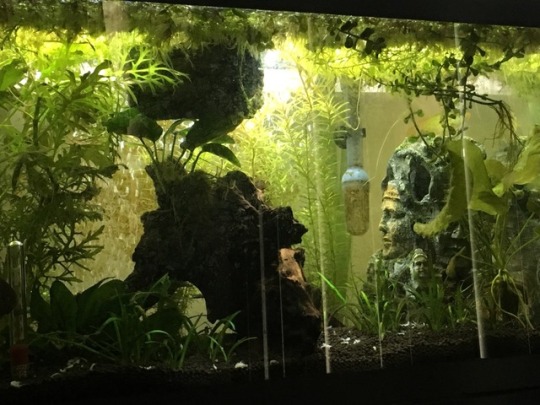
Tank update!
It’s been a while since I did one of these.
I had a few issues with the tank in the first couple of weeks of having fish. Nothing so bad as a cycle out of whack, but things like shyness, algae, not accepting foods, etc.
BUT EVERYTHING IS GOOD NOW.
I got the floating log and the (frankly a little creepy) face rock thing to give the fish more hiding spots, and they’ve been better for it. I also added frogbit for shade and that’s really helped them with their shyness.
They have also finally adjusted to frozen foods after not accepting anything but live worms for a while. And the diet has made Domino grow faster than his tankmates, with the F. Chrysotus trio not changing too much in size.
I do kind of wish now that I had gotten a 20 long though, since despite being pretty sedentary fish, I just feel they deserve more space. ;-;
0 notes